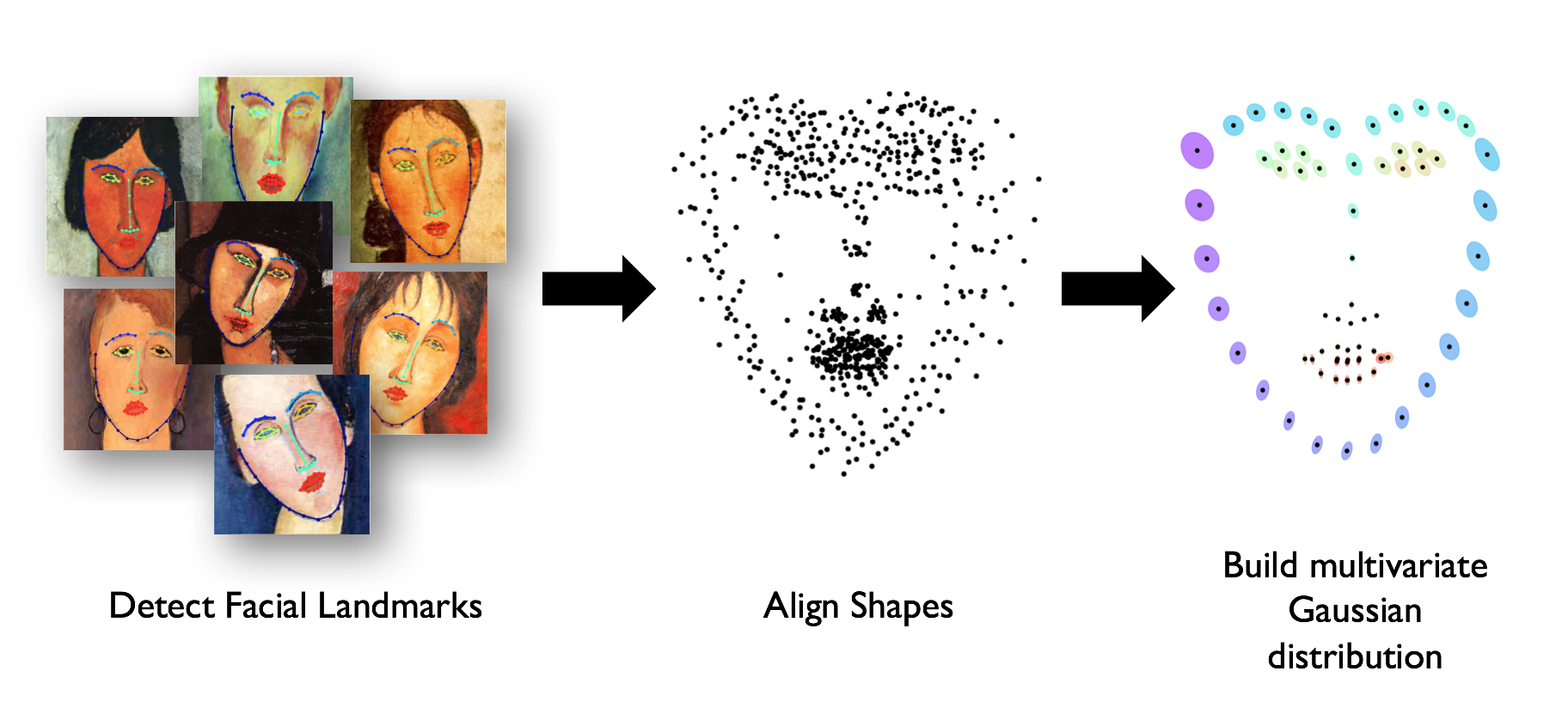

To define a mathematical model of the geometric style of an artist, we use our landmark detection framework to extract facial landmarks from a collection of portraits by each artist. We uniformly normalize the size of the faces and align their center points (the point on the tip of the nose). We calculate the mean vector for the set of portraits of each artist μartist and the covariance matrix Σartist. Lastly, we fit a Multivariate Gaussian Model to the artist data Ƥ artist ~ Ɲ ( μartist, Σartist ).
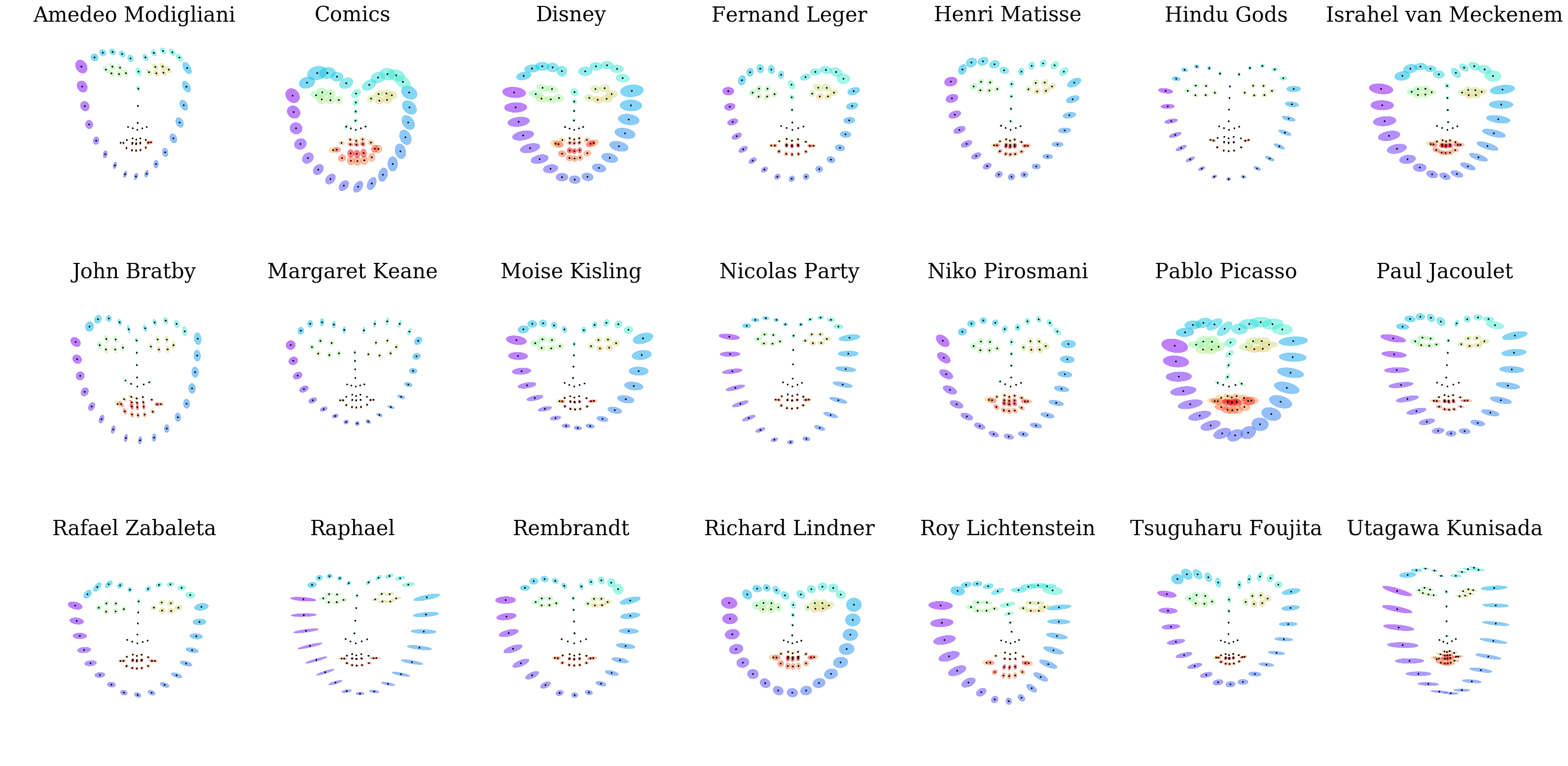
Here we show the distribution (mean and covariance) of each landmark point for the different artists. Observing these distributions, we can identify the signature geometric style of the artist. For example, elongated face and nose for Modigliani, a short face with wide chin and large distance between the eyes for Leger, a small face with large eyes for Keane, etc. This kind of analysis can help understand artistic styles, and aid in finding similarities or differences between the different artists.
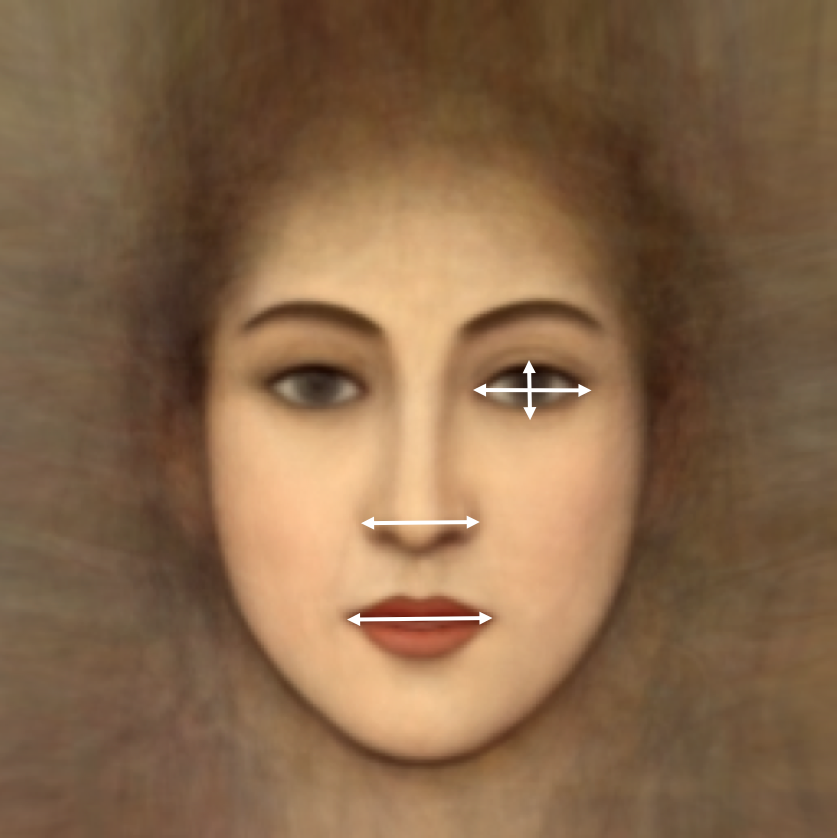 We define a vector of 99 dimensions as the geometric style signature of a portrait.
This signature vector includes many size, proportion and location measurements of facial features.
We also include facial proportions that have been reported to have correlation with beauty and
attractiveness (see Table 1).
In this figure we show two example ratios included in the
signature- mouth to nose width ratio and right eye
aspect-ratio (features 39 and 66, respectively).
We define a vector of 99 dimensions as the geometric style signature of a portrait.
This signature vector includes many size, proportion and location measurements of facial features.
We also include facial proportions that have been reported to have correlation with beauty and
attractiveness (see Table 1).
In this figure we show two example ratios included in the
signature- mouth to nose width ratio and right eye
aspect-ratio (features 39 and 66, respectively).
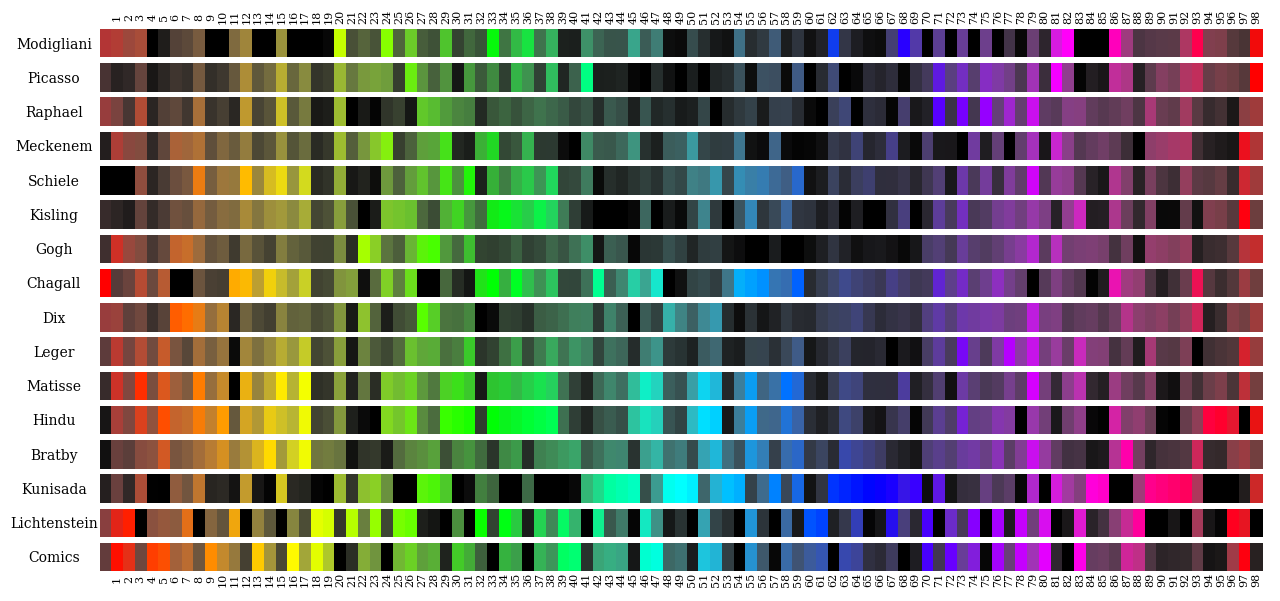
In this figure we use color coding to visualize signatures of different artists, each row represents an artist's style signature, and each column represents one measure out of the different geometric style signature. We use the HSV color space to code style signatures; for each column (or measure), a certain hue is selected, and the brightness of each entry is determined by the specific signature value (brighter is larger).
Observing these style signature, we can identify unique geometric style features for different artists. For example: notice ratios 20, 62 and 68 in Modigliani's signature, which are distinctly higher compared to other artists. These ratios are all related to the length of the nose. This indeed, is a key element of Modigliani's geometric style.
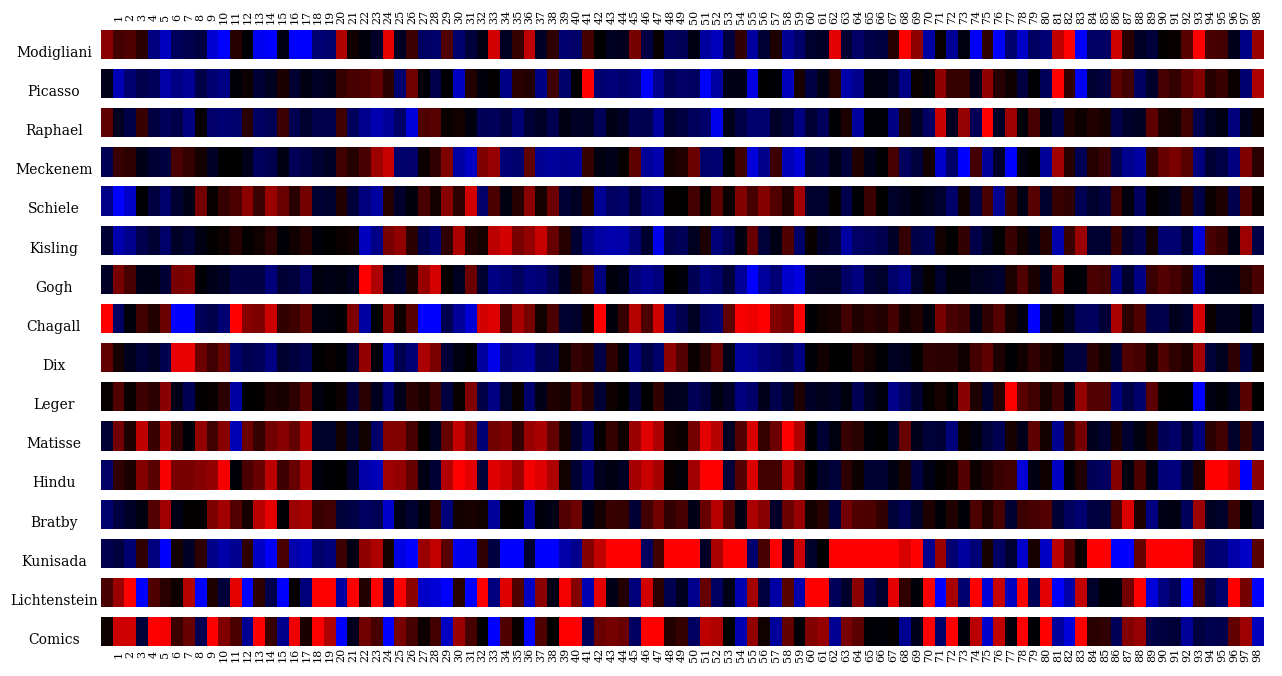
In this figure we visualize the distance of each artist's style signature from the mean Artistic Faces Dataset signature. We use blue color to indicate values that are smaller than the mean signature, and red for values that are larger than the mean AF signature. By using this color scheme, we can observe which artist ratios deviates from the mean signature, and to what direction - positive or negative.
Using this visualization, it is easier to notice which artists have a more exaggerated geometric style (e.g. Kunisada, Modigliani), and which have more realistic geometric style (e.g. Raphael, Leger). It is also easier to find the unique features for each artist. For example, observing Leger's distance from the mean, we notice it is relatively dark, hence, close to the mean signature. We can easily spot an irregularity in ratio 93 (bright blue color); this ratio is inversely proportional to the distance between the eyes, hence a bright blue color means that eye distance for Leger's portraits is distinctively larger than the mean AF portrait. This indeed, is a key element of Leger's geometric style.